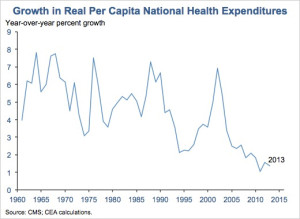On March 4, 2015, the Supreme Court participated in a divided and heated argument addressing the issue of whether the Internal Revenue Service (IRS) may permissibly promulgate regulations to extend tax-credit subsidies to coverage purchased through exchanges established by the federal government under Section 1321 of the Patient Protection and Affordable Care Act.
The Affordable Care Act (ACA) is also known as Obamacare, which is a law enacted to ensure access to affordable health insurance for all Americans. To achieve this, Obamacare offers consumer discounts, or tax credits, on government-sponsored health insurance plans by expanding Medicaid to include more consumers who cannot afford health care. To receive discounts, one’s household income must be between one and four times the Federal Poverty Level, a government regulated number used to determine the minimum amount of money needed for basic living expenses. These credits can be applied to premiums to lower monthly insurance bills or they can be declared on tax returns at the end of the year. For individuals whose income does not fall within that range, the option to purchase a plan on the federal insurance marketplace or through state exchanges is still available, but he or she will not get any discounts.
King v. Burwell, the case addressing this issue, centers on the language of the ACA. The statute approved federal subsidies to help Americans purchase health insurance on state exchanges. Instead of setting up their own exchanges, some states permitted the federal government to do so for their residents. Conservatives, contesting Obamacare, argue that those states are now being illegally subsidized, because the statute’s language specifically applies to state exchanges. Liberals, supporting Obamacare, argue that the law contains a typo regarding this provision, and the subsidies should continue.
After eighty minutes of controversial debate at the Supreme Court, it seemed that Obamacare’s future could depend on what was conveyed to the states when the Act was passed, whether tax credits could be offered in state and federal exchanges, or only in state exchanges. Under the first interpretation, the statute survives. Under the second interpretation, the law could still survive if the Supreme Court judges find that interpretation unconstitutionally coercive.
The plaintiff, challenger of Obamacare, argued that the issue rests on statutory interpretation, and the statute’s language does not include federal exchanges in its provision addressing the application of tax credits. The Supreme Court’s liberal wing responded by asserting that they do not just look at a few words, but the whole text to provide context. Justice Scalia then responded that the law “means what it says” even if that generates negative consequences.
Justice Kennedy, whose vote may decide the case, acknowledges that the plain reading of the statute may support the argument that tax subsidies are only permissible in state exchanges, but that that interpretation may be unconstitutional. Suggesting that the statute may be ambiguous enough to give the IRS deference to allow tax credits in federal health exchanges, Kennedy also recognized that authorizing the IRS that power might be a “drastic step” since billions of dollars is at risk.
Perhaps the statute should be expanded to include federal exchanges because the purpose of Obamacare is to make health insurance more affordable for those less fortunate. By refusing to incorporate federal exchanges, many citizens will not be able to participate in tax credits only because their state decided not to set up its own exchanges. However, if federal exchanges are included, the government may not be able to afford to offer everyone tax credits. The court’s decision is expected by late June, and will decide whether seven million low and middle-income people in around forty states will continue to receive discounts to aid them in affording health insurance. If the Supreme Court rules that the subsidies in federal exchanges were not authorized by the Act, most of those people will no longer be able to purchase health insurance, which could cause insurance markets in those states to downfall.

